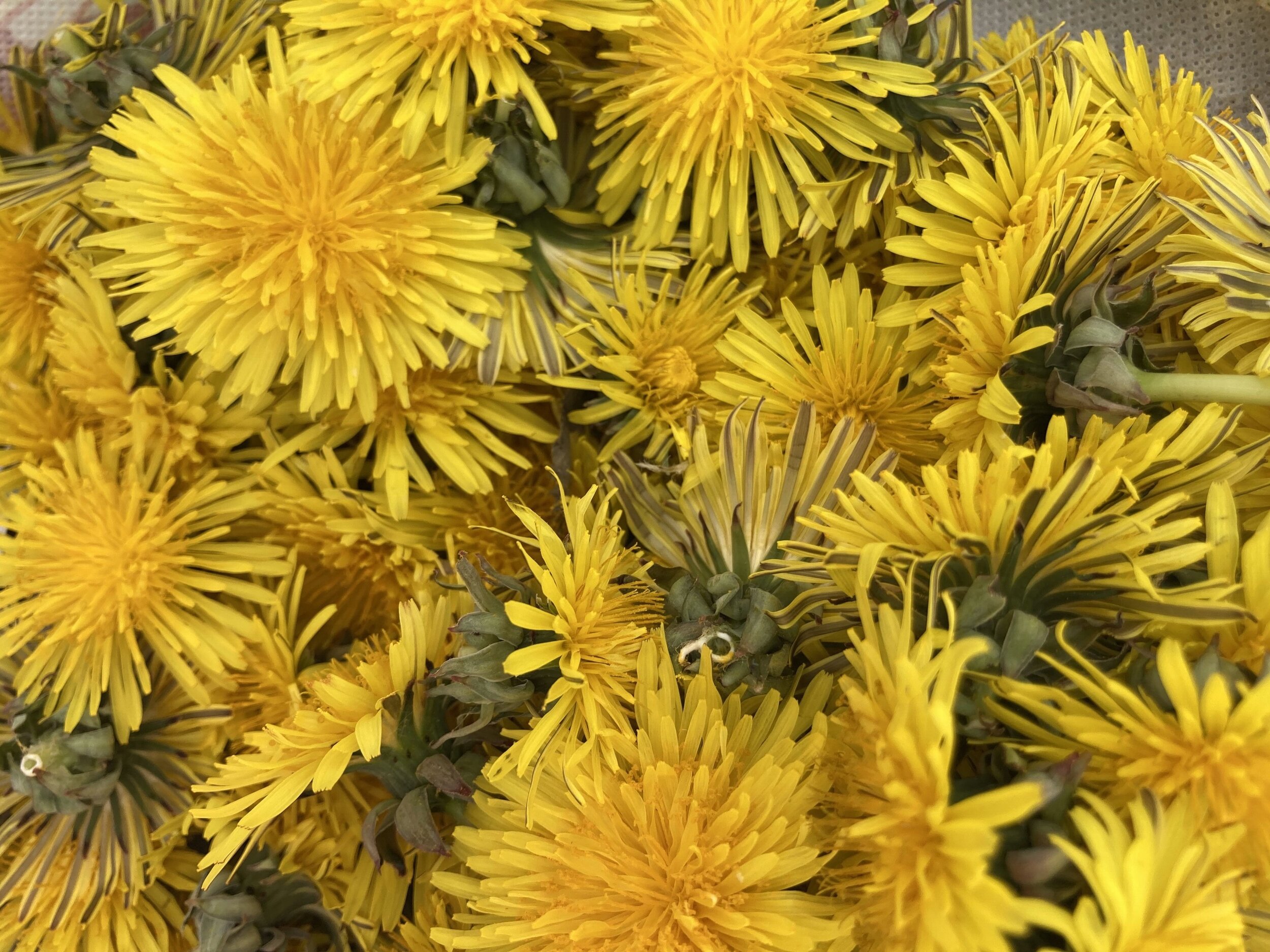Dandelion
While most plants in the Genus Taraxacum are referred to as dandelions, the most commonly observed species in western Canadian urban green spaces is T. officinale, aka the common dandelion. Entirely edible, this early spring bloomer is beloved by bees, and is one of the easiest plants to start with when diving into the world of natural dyeing.
Note: all the dandelions foraged in this post come from invitations to collect in yards about to be mowed. But am happy to report there is no end of dandelions remaining in the neighbourhood at large for the bees.
TL;DR: Dandelions yield a dark chocolate brown in wool when premordanted with iron and a bright yellow when premordanted with alum. Note, on mohair, a premordant of iron yields more of a military grey - you can find that post here.
Maya the Bee
Introducing my children to the wonders of natural dyeing has been a really easy way to get free labour. Here my daughter is helping collect the dandelions. For this dye vat, we collected the entire plants (minus the roots). I’ll also show below the colour you can get just dyeing with the flowers alone.
Dandelion plants
Once collected, the roots were sniped off and the dirt shaken off. After this, the plants were chopped up with scissors over the dye pot.
I didn’t weigh the plants but there is approximately 8 liters worth once chopped up (approximately the same volume as 2 x 1-gallon milk jugs).
Simmering
Once chopped, the plants were simmered for an hour in water and left to cool. The deep green of the plants faded into yellow, tans and paler greens.
Pre-soaking the wool
Into the dye vat I wanted to dye two 10 gram skeins - one pre-mordanted with iron and the other with alum. I generally soak them separately (as seen here in two jars) for anywhere from 20 mins to an hour. This is so if there is any excess iron it won’t contaminate the alum-mordanted skein - to this end, I also give the premordanted with iron skein a good rinse before it’s soaked. This all helps ensure the skeins will both sink into the dye vat and will dye even colours.
In they go
As usual, I used a 1-gallon paint mesh bag from the paint store to help prevent the dye stuff from tangling up the yarn.
Simmered for 1 hour
I sank the bag under the dandelion plants and simmered for an hour. I occasionally poked at it, stirred and flipped it over twice to help ensure even colour uptake. Then the dye vat was left to cool and the skeins were rinsed out.
Results left to right:
Skein 1: Premordanted with iron, dark chocolate brown.
Skein 2: premordanted with alum, cheerful yellow.
Bonus!
What about dyeing with just the flower heads?
95 grams of flowers
Two skeins premordanted with alum for a total of 23 grams of fiber. For a total of 412% Weight of fiber, or a ratio of approximately 4:1 fresh flowers to fiber.
Chopped up
The flowers were added to a pot with about 8 litres of water. As they were floating at the surface, it was easy to chop them up at a leisurely pace.
Wool simmered for 1 hour
The wool skein (premordanted with alum) was placed into another 1-gallon mesh bag, pre-soaked for an hour while the flowers were being simmered. After the dye vat had cooled, I added the wool and simmered again for an hour before leaving it to cool and the wool to be rinsed off.
Results from the flowers:
The colour with just the flowers came out a brighter, purer yellow than the whole plant - with no green undertones.













